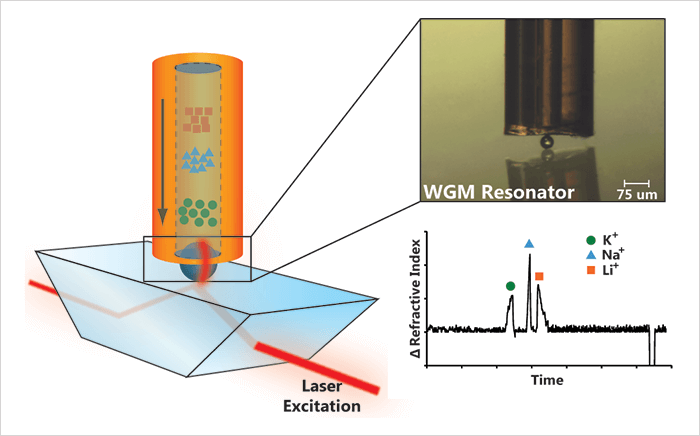
Scientists at Kansas University have discovered that detection limits of specific analytes can be improved by combining capillary electrophoresis (CE) with ‘whispering-gallery’ mode (WGM) detection – so named after the effect in St Paul’s Cathedral, where the circular shape of the gallery allows sound waves to propagate unusually long distances.
The illustration shows a schematic of the end column WGM resonator that senses changes in refractive index. To monitor the WGM resonance, light from a tunable diode laser is directed into a Dove prism and coupled into the resonator. The CE capillary is carefully positioned above the resonator to partially encapsulate it, while leaving enough space for fluid to flow. The inset shows a magnified view of the CE capillary outlet (75 µm ID; 363 µm OD) and WGM resonator (53 µm diameter). The WGM resonator responds to changes in refractive index as the ion bands pass by.
References
- DC Kim and RC Dunn, “Integrating whispering gallery mode refractive index sensing with capillary electrophoresis separations using phase sensitive detection”, Anal Chem, 88 (2), 1426–1433 (2016).




